Geographical Reading of White Oleander
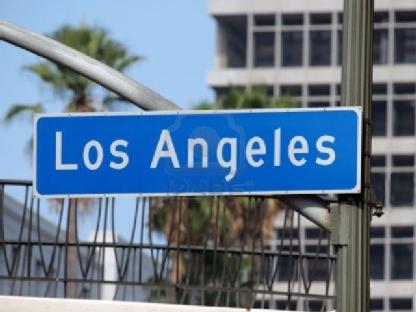 Throughout “White Oleander”, by Janet Fitch, the urban landscape of the city is used to symbolise the fragmented, transient nature of modernity. Through use of allegory, the novel portrays the fragmentation of modernity, and the exile and alienation the modern condition causes. Fitch portrays through the urban landscape the oppression of capitalism, and the sense of fragmentation of the inhabitants.
Throughout “White Oleander”, by Janet Fitch, the urban landscape of the city is used to symbolise the fragmented, transient nature of modernity. Through use of allegory, the novel portrays the fragmentation of modernity, and the exile and alienation the modern condition causes. Fitch portrays through the urban landscape the oppression of capitalism, and the sense of fragmentation of the inhabitants.
In "White Oleander", a parallel is drawn between characters and nature in a socio-spatial relationship. The city, a symbol of capitalist oppression and the fragmentation of modernity, seems almost to be under attack from the forces of nature, as though the winds and fires are trying to restore order. Astrid and her mother are “trapped in the heart of the burning landscape” (Fitch, 28) – the imagery of the “red moon(…)red from the fires burning” (Fitch, 27) conveys the danger of nature, as well as representing Ingrid’s anger. In fact, the power of nature, in particular heat and fire, reflects the changing moods of Ingrid. When the fires cause “Ashes [to float] in the pool” (Fitch, 28), Ingrid remarks that she should “Paint [her] face with ashes” (Fitch, 27), mirroring nature. The struggle of nature against the city runs parallel to Ingrid’s feelings towards Barry. When “toxic red tide” (Fitch, 28) of summer causes “the city [to drop] to its knees like ancient Sodom, praying for redemption” (Fitch, 29), Ingrid is plotting to kill Barry. The imagery of the city of Sodom calls for the divine judgement of Ingrid as she plans to murder Barry, and yet no such judgement comes – in the strange melee of modernity, any moral code has been abandoned.
The linkage between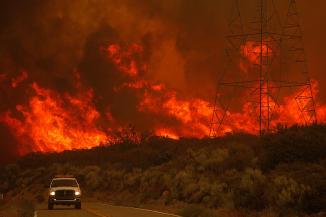 the natural landscape and the characters of the novel is apparent throughout. For example, when Astrid is living at Starr’s, and consumed by her passion for Ray, the “round slopes of the mountain” to her look “like hands modeling the shape of a lover’s thighs” (Fitch, 96). “At the height of the fires” (Fitch, 148) in summer, when nature is raging, Astrid’s mother is furious with her, asking whether Astrid is “trying to drive [her] mad?” (Fitch, 149). Olivia abandons Astrid when “the leaves [begin] to redden and fall”, symbolising both the end of the summer and the end of their friendship.
the natural landscape and the characters of the novel is apparent throughout. For example, when Astrid is living at Starr’s, and consumed by her passion for Ray, the “round slopes of the mountain” to her look “like hands modeling the shape of a lover’s thighs” (Fitch, 96). “At the height of the fires” (Fitch, 148) in summer, when nature is raging, Astrid’s mother is furious with her, asking whether Astrid is “trying to drive [her] mad?” (Fitch, 149). Olivia abandons Astrid when “the leaves [begin] to redden and fall”, symbolising both the end of the summer and the end of their friendship.
The way in which the city oppresses its inhabitants is reflected in the way it also oppresses nature. The manmade heteropolis of the city represents the modern condition, alienation of nature from itself. When Astrid is living with Ron and Claire, their suburban house symbolises their attempt at the American Dream – a dream made unattainable by Claire’s insanity, a characteristic of the modern condition. When “Ron [mows] the lawn, cutting the heads off the primroses” (Fitch, 192), it is an act of the typical suburban American, keeping the lawn neat. However, As Richard S. Weinstein writes in his essay, “The First American City”, “The American obsession with front lawns reveals a deeper ideological inclination. The lawn also represents a subjugation of nature to the rule of civilization. It is an abstraction of the presence of nature(…)it is nature known and therefore tamed” (Weinstein, 26). Ron’s taming of the front lawn is symbolic of the way in which he tries to tame Claire, which in turn represents the alienating nature of modernity. In his desperation to live out the idyllic American dream, Ron subjugates nature and his wife, creating a sense of the alienation of modernity within his household.
Towards the end of the novel, Astrid finds comfort in the river, “clear and melodious, the smell of fresh water” (Fitch, 346). Instead of thinking about her mother, a symbol of oppressive control over her (a similar influence to the disillusioning weight of modernity) she would “rather think about the way the willows and cottonwoods and palms [break] their way through the concrete” (Fitch, 346-7). For Astrid, the river is “alive, despite everything, guarding the secrets of survival” – she sees it as an allegory of herself. Astrid’s identification with the river represents “the persistent yearning in the American character for a redemptive contact with nature(…), an escape from the failures of the industrial metropolis” (Weinstein, 28-9), but what she is identifying with is not natural, but rather a symbol of modernity’s control, of the rigidity that she is trying to escape. The Los Angeles River flows through a fixed concrete channel, built to prevent flooding. Thus, the allegory of Astrid as the river becomes more ominous, as though she too has been forced into a set path, a certain way of living, and yet cannot recognise it. The conflicting nature of her identification with the river therefore comes to symbolise the fragmentation and confusion of modernity, the way in which modernity alienates everything from its true self, be it a person, a river or a city.
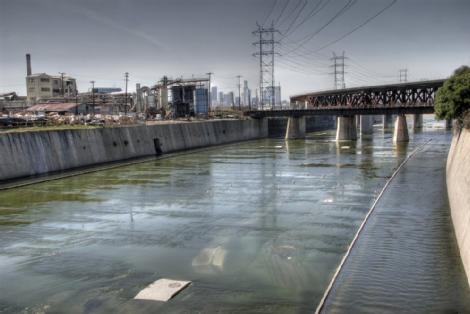 The relationship between Los Angeles and the characters of "White Oleander", the way in which the city comes to symbolise the conditions of modernity that the characters are subjected to, can be explained by Soja, in his book “Post Modern Geographies: The Reassertion of Space in Critical Social Theory”. He argues that “The analysis of spatial structure is not derivative and secondary to the analysis of social structure(…)rather, each requires the other” (Soja, quoting Derek Gregory’s Ideology, Science and Human Geography, 57). “Socially-produced space”, such as that of Los Angeles, “is a created structure comparable to other social constructions resulting from the transformation of given conditions inherent to being alive” (Soja, 80). The space of the city is thus influenced by its inhabitants. The inhabitants are living in the alienating, fragmented conditions of modernity, and so Los Angeles comes to be fragmented and alienating. The oppressive nature of the city weighs heavily on Astrid; “Her name [is] lost. Her name [is] Nobody’s Daughter”, in “Those heavy days”, “while the city rumbled on overhead” (Fitch, 39). Thus the city represents the oppressive capitalist society of America and the never-ending progression of modernity, “[humming] and [glittering] like a computer chip deep in some unknowable machine” (Fitch, 3), leaving Astrid “transparent” (Fitch, 44). “In an extended city like Los Angeles, we come closer(…)to the condition of modernity described by Marx” (Weinstein, 34), one of fragmentation and alienation. The city continues, uncaring and distant, whilst Astrid resembles “A bird trapped in a sewer, wings beating against the ceiling” (Fitch, 39). The metaphor of a trapped bird is powerful, as birds are typically a representation of freedom. As Astrid moves throughout the city, beneath the “terrible empty sky” (Fitch, 327), the reader’s experience of “the physical structure of Los Angeles, its nonhierarchical, unordered presence(…)our compartmentalized, multileveled, multiscaled, and fragmented impression of it seems to the be world Marx described as melting into air” (Weinstein, 35).
The relationship between Los Angeles and the characters of "White Oleander", the way in which the city comes to symbolise the conditions of modernity that the characters are subjected to, can be explained by Soja, in his book “Post Modern Geographies: The Reassertion of Space in Critical Social Theory”. He argues that “The analysis of spatial structure is not derivative and secondary to the analysis of social structure(…)rather, each requires the other” (Soja, quoting Derek Gregory’s Ideology, Science and Human Geography, 57). “Socially-produced space”, such as that of Los Angeles, “is a created structure comparable to other social constructions resulting from the transformation of given conditions inherent to being alive” (Soja, 80). The space of the city is thus influenced by its inhabitants. The inhabitants are living in the alienating, fragmented conditions of modernity, and so Los Angeles comes to be fragmented and alienating. The oppressive nature of the city weighs heavily on Astrid; “Her name [is] lost. Her name [is] Nobody’s Daughter”, in “Those heavy days”, “while the city rumbled on overhead” (Fitch, 39). Thus the city represents the oppressive capitalist society of America and the never-ending progression of modernity, “[humming] and [glittering] like a computer chip deep in some unknowable machine” (Fitch, 3), leaving Astrid “transparent” (Fitch, 44). “In an extended city like Los Angeles, we come closer(…)to the condition of modernity described by Marx” (Weinstein, 34), one of fragmentation and alienation. The city continues, uncaring and distant, whilst Astrid resembles “A bird trapped in a sewer, wings beating against the ceiling” (Fitch, 39). The metaphor of a trapped bird is powerful, as birds are typically a representation of freedom. As Astrid moves throughout the city, beneath the “terrible empty sky” (Fitch, 327), the reader’s experience of “the physical structure of Los Angeles, its nonhierarchical, unordered presence(…)our compartmentalized, multileveled, multiscaled, and fragmented impression of it seems to the be world Marx described as melting into air” (Weinstein, 35).
The constant movement of Astrid through the city causes the reader to experience Los Angeles as “a passage through space, with constraints established by speed and motion, rather than the static condition of solids(…)The resulting detachment(…), by force of the time spent in travel, contributes to isolation” (Weinstein, 35). The instability of Astrid’s life within the city, the way in which she moves from home to home, reflects the isolated condition of modernity, as “The uncertainty, the dissolving and chance conditions of contemporary life are reflected in the ad hoc texture of the Los Angeles urban landscape” (Weinstein, 34). The fragmented presentation of the city symbolises the fragmented nature of modern life, introducing the idea of exile within one’s own city, the characters feeling lost whilst surrounded by what should be familiar. Astrid’s “loneliness” (Fitch, 112) is inescapable, even when she is surrounded by the mundane setting of “crushed white gravel flowerbeds(…)punctuated by white plastic dahlias” (Fitch, 113), representing the supposed comfort of suburbia. The “linkage between the nuclear family and the suburban impulse” (Weinstein, 26) is broken in "White Oleander"; Astrid is left isolated when surrounded by the suburban ideals of the American Dream.
Her mother “[knows] what [Astrid is] learning to endure” (Fitch, 113) – “Loneliness is the human condition” (Fitch, 112). Astrid’s loneliness and the fragmentation of modernity are portrayed in a different way through each of her foster homes. At Starr’s, she loses faith in religion. At Marvel’s, her sole friend, Olivia, is forbidden to her because of her race. The starvation she experiences at Amelia’s house symbolises the emptiness of modernity, and Claire’s suicide removes the one person Astrid loves. At Mac, Astrid rejects her own beauty, showing her disillusionment with herself. At Rena’s, her capitalist idea that “’Money makes world go around’” (Fitch, 282) shows the meaningless greed of modern society.
Astrid’s many foster homes, at first seemingly disparate, become more similar with closer analysis. In each, Astrid experiences another disillusionment of the modern condition; the interconnecting web of her journey through modernity is symbolised in the physical landscape of Los Angeles. The descriptions of Astrid’s journeys measured by freeways (“four freeways to get to [her] new home” (Fitch, 45)) creates “The primary image of the city [as] an extended repetitive fabric” (Weinstein, 30), as inescapable and unchanging as the modern condition. As Astrid travels around the city, the conditions of modernity (loss of religion, segregation, emptiness, loss of love, ugliness, monetary greed) are revealed to her, and so the city comes to symbolise these conditions. The emptiness of the desert at Starr’s, the “kingdom of strip malls and boulevards” surrounding Marvel’s house and the “Gauguin syphilitic nightmare” of the house itself (Fitch, 108), the ironic luxury of Amelia’s whilst the girls starve, Claire’s futile attempt at the American dream, leading to her death…“the temporary and flimsy character of much construction”, symbolised by the temporariness of Astrid’s stays at her various foster homes, “contributes to the sense of instability and impermanence” of the city (Weinstein, 35).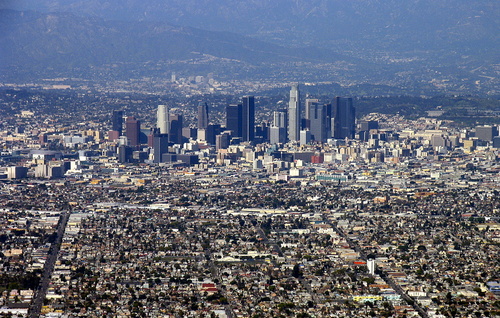
The way in which each of Astrid’s foster homes introduces her to another condition of modernity is in keeping with the heterogeneity of Los Angeles; as Charles Jencks explains in his essay, “Hetero-Architecture and the L.A. School”, “This heterogeneity, at all levels, is at once excessive in Los Angeles and typical of the world city” (Jencks, 48). The heteropolis of Los Angeles is reflected in the many contradictions Astrid experiences in her foster homes. Her first love, Ray, is much older than her, and belongs to her foster mother. At Amelia’s, “In the beautiful wooden house” (Fitch, 171) full of luxury, “Hunger [dominates] every moment” (Fitch, 172). “If [Astrid has] anything good, it [is] only because of Claire” (Fitch, 249), but Claire commits suicide, leaving Astrid alone. All the conflicts within Astrid’s foster homes, the disparity between them despite the fact that they are all linked by the never-ending freeways, contained in inescapable stretch of the extended city, portrays the fact that, as explained by Edward Soja and Allen Scott in their essay “Introduction to Los Angeles, City and Region”, “In every urban space one can find liberating and oppressive forces, the unique and the general, the utopian and dystopian, mixed together in complex ways. Recognition of the stubborn coexistence of these conflicting circumstances and their often revealing interdependence and inseparability is the starting point for making sense of the urbanization of Los Angeles – or, for that matter, any other contemporary metropolis” (Soja/Scott, 2).
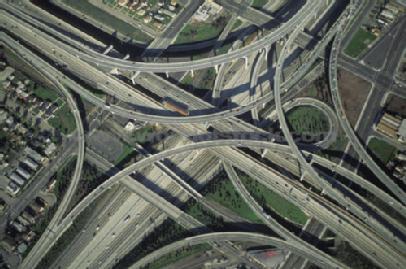 Each foster home presents a different face of Los Angeles, from “The beauty of stones, the river in flood, the stillness” (Fitch, 109) of Starr’s to the “scraps of brocade in a fifty-cent bin, red geraniums on a sweatshop window ledge” (Fitch, 301) at Rena’s. “This increasingly complex and volatile mix of the old and the new, the unique and the paradigmatic, has rekindled interest in Los Angeles as an object of urban inquiry(…)and making sense, through Los Angeles, of the urban experience at large” (Soja/Scott, 16-17). This perhaps becomes the most important question concerning Fitch’s representation of the city in "White Oleander"; “It is still an open question(…)whether to view Los Angeles as an exceptional case, as persistently peculiar and unreproducible type of city, or as an exemplary, if not paradigmatic, illustration of the essential and generalizable features of the late-twentieth-century urbanization” (Soja/Scott, 1). Los Angeles comes to be presented as “a particularly revealing place from which to understand and interpret global phenomena of urbanization and regional development in relation to broadly based transformations of contemporary capitalist society” (Soja/Scott, 2-3)”. The urban landscape of the city comes to be used as a symbol of the alienating modern condition and the oppression of capitalist society, a way for critics to “[make] sense, through Los Angeles, of the urban experience at large” (Soja/Scott, 16 -17). Astrid’s movement through the city, her journey from foster home to foster home, represents the fate of every citizen of modernity, searching for a place of meaning and safety in the unstable impermanence of the modern condition.
Each foster home presents a different face of Los Angeles, from “The beauty of stones, the river in flood, the stillness” (Fitch, 109) of Starr’s to the “scraps of brocade in a fifty-cent bin, red geraniums on a sweatshop window ledge” (Fitch, 301) at Rena’s. “This increasingly complex and volatile mix of the old and the new, the unique and the paradigmatic, has rekindled interest in Los Angeles as an object of urban inquiry(…)and making sense, through Los Angeles, of the urban experience at large” (Soja/Scott, 16-17). This perhaps becomes the most important question concerning Fitch’s representation of the city in "White Oleander"; “It is still an open question(…)whether to view Los Angeles as an exceptional case, as persistently peculiar and unreproducible type of city, or as an exemplary, if not paradigmatic, illustration of the essential and generalizable features of the late-twentieth-century urbanization” (Soja/Scott, 1). Los Angeles comes to be presented as “a particularly revealing place from which to understand and interpret global phenomena of urbanization and regional development in relation to broadly based transformations of contemporary capitalist society” (Soja/Scott, 2-3)”. The urban landscape of the city comes to be used as a symbol of the alienating modern condition and the oppression of capitalist society, a way for critics to “[make] sense, through Los Angeles, of the urban experience at large” (Soja/Scott, 16 -17). Astrid’s movement through the city, her journey from foster home to foster home, represents the fate of every citizen of modernity, searching for a place of meaning and safety in the unstable impermanence of the modern condition.
by Poppy Akers
Works Cited
Fitch, Janet. White Oleander. US: Virago Press, 1999. Print.
Jencks, Charles. “Hetero-Architecture and the L.A. School”. The city: Los Angeles and urban theory at the end of the twentieth century. Ed. Allen J. Scott, Edward W. Soja. US: University of California Press, 1996. 47 – 75. Print.
Scott, Allen J. and Soja, Edward W. “Introduction to Los Angeles, City and Region”. The city: Los Angeles and urban theory at the end of the twentieth century. Ed. Allen J. Scott, Edward W. Soja. US: University of California Press, 1996. 1 – 21. Print.
Soja, Edward W. Post Modern Geographies: The Reassertion of Space in Critical Social Theory. London: Verso, 1989. Print.
Weinstein, Richard S. “The First American City”. The city: Los Angeles and urban theory at the end of the twentieth century. Ed. Allen J. Scott, Edward W. Soja. US: University of California Press, 1996. 22 – 46. Print.
